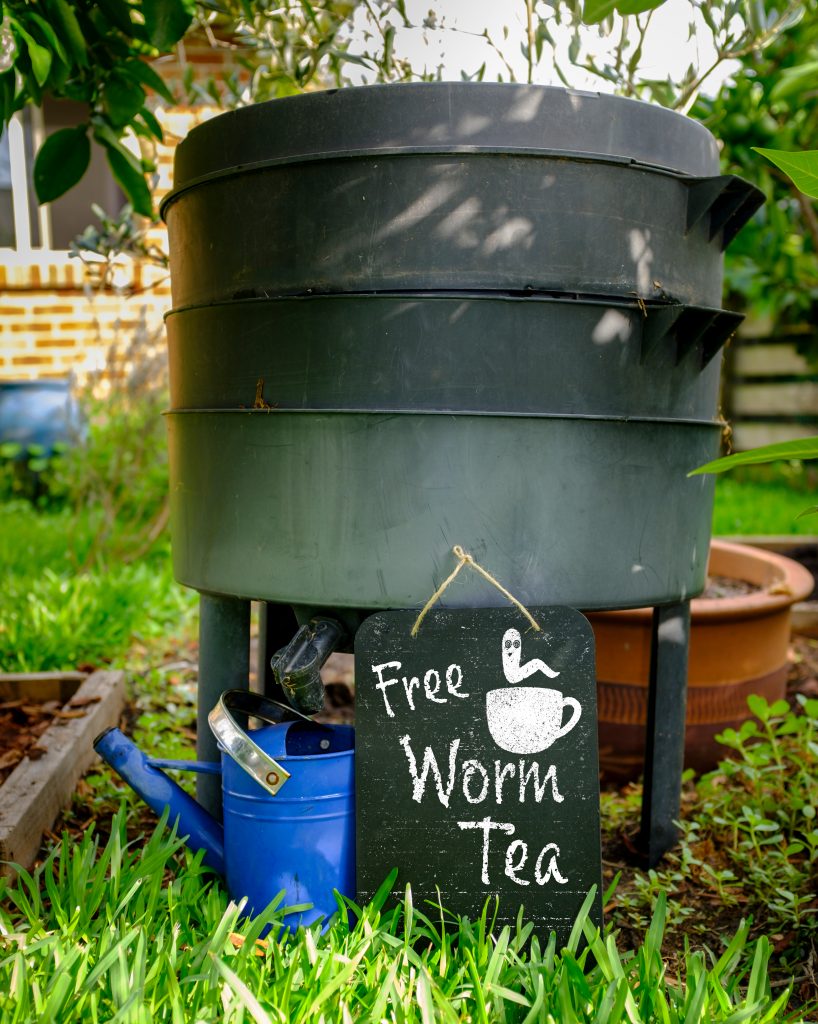Worm Farms
What is a worm farm (also know as a worm cafe or worm factory)
A worm farm is a great way to get rid of your kitchen scraps and turn them into the best fertilizer for your garden. The process is call vermiculture, worms love eating through kitchen waste and in turn create worm castings. You you can then add straight to your garden.
A worm farm looks a bit like a compost bin. They don’t smell and are great for small spaces, a balcony or even indoors.
Setting up a worm farm
You can buy a worm farm from your local hardware store, online or make your own, using an old bath tub or polystyrene boxes with holes in the bottom.
Once you have your worm farm, choose a location for it. In summer, you will want to keep your worms cool under a shaded area and in winter either indoors or in a warmer position. Also make sure they are close to your kitchen to make it easy on yourself to take out the kitchen scraps.
Worms used in worm farms are different to the worms you find in your garden. You can buy worms from your local hardware store, a local supplier or online. The two types of worms to look out for are Tiger worms and Red worms.
Start by putting a layer of cardboard in the bottom of your worm farm to prevent the worms from falling through until there is enough worm castings there. Then add a layer of moist ‘bedding’ for your worms. The bedding can be ripped up cardboard, shredded paper, newspaper. Cardboard is the best option such as toilet rolls or egg cartons but avoid glossy cardboard. The bedding needs to be moist therefore dunk it in some water and wring it out so it’s not too wet.
Next add your worms and you can start given them a small amount of food. It’s important not to over feed them in the beginning as this can harm them but also food will go mouldy. It’s recommended to start with about 2 cups of kitchen scraps either blended up or at least cut up into small pieces.
Keep an eye on your worms and increase the food as the number of worms increases. Always add extra moist bedding when you add more food. Try to keep a 50/50 ratio of food and bedding.
What to feed worms
Worms can eat most kitchen scraps and its a good idea to blend or chop scraps as small as possible (when time permits!) as this will help the worms get through the food more quickly.
- Fruits and vegetables
- Crushed eggshells
- Small amounts of coffee grounds
- Tea leaves
- Dry leaves or grass clippings
- Shredded paper/newspaper (moist)

What not to feed worms
It’s recommended you don’t put the following items into your worm farm:
- Waxy or glossy paper/cardboard: this can be toxic and should be avoided from all composting systems. Add to your recycle bin.
- Meat & fish: Its better to use bokashi bin for these as they can attract pests such as rats.
- Onions and citrus: While the worms will eat a small amount, its often easier to avoid all together
- Dairy
- Large amounts of starches such as bread, rice etc. – worms aren’t a fan and they can attract pests
- Oils
- Water – You shouldn’t need to add any water so long as the bedding is moist when you add it. If you see a lot of ‘worm wee’ at the bottom of your container, this is a sign you are adding too much water.
Harvesting the casting
It’s time to harvest your worm castings when your bin is full. Most bins have a full line inside the container. Alternatively you can harvest any time you require castings. There are different methods for harvesting the castings so you can try different ways to see which one works best for you. Here are two options to try.
Option 1:
When you are ready to collect your worm castings, an easy way to do it is to move everything inside the bin to one side. Now on the cleared side you can add fresh moist bedding along with some food scraps.
The worms will slowly migrate across to the spot you cleared with the new bedding. After a couple weeks most of your worms should have come across to the new side, allowing you to dig out the castings from the other side.
Option 2:
An alternative option is to create mounds with your worm castings either on the lid of your worm farm or in the worm farm. Worms don’t like the light and will dig down to hide.
Leave the mounds for around 10 minutes, then start harvesting the castings the top off the mounds. When you start to see the worms, you can put them back into the worm farm or wait another 10 minutes until they have dug themselves a bit deeper. When you can’t get any more castings out, put all the piles together and continue the process until there is a pile of worms left.
What to do with worm castings
Here are some ideas of how to use your worm castings:
- Combine with your compost when adding compost on your ‘no dig’ vegetable garden
- When potting plants, you can add it to your potting mix
- Sprinkle around your plants or
- Mix it into the soil around the area you are going to plant into
- Make an amazing liquid fertilizer for your plants by putting a handful of castings into a stocking and then suspend the stocking in a large bucket. The slurry mix that is left after squeezing out the liquid from the stocking is perfect for your garden.